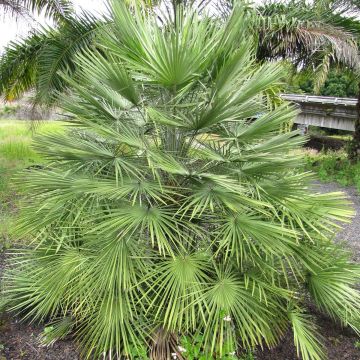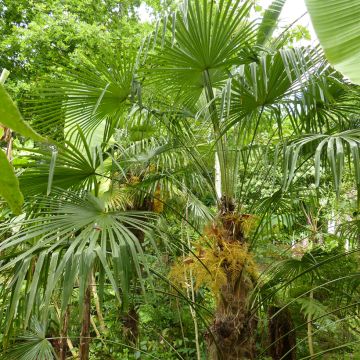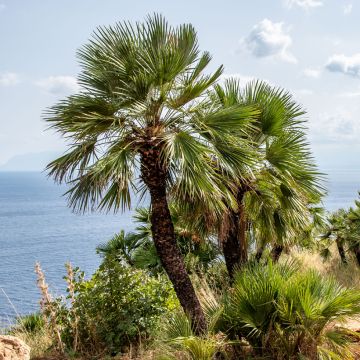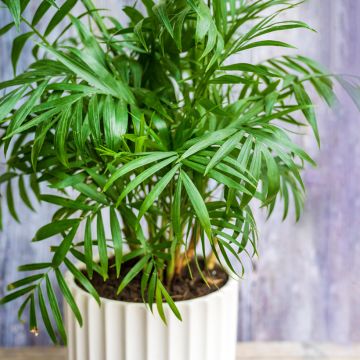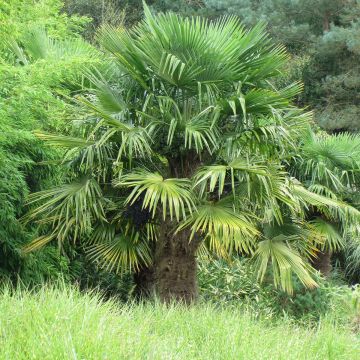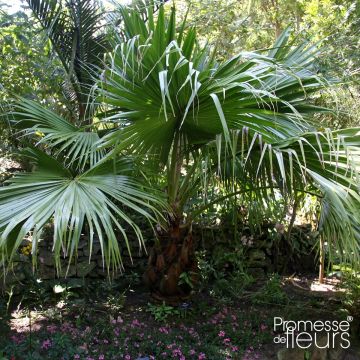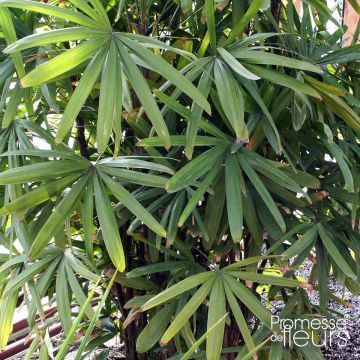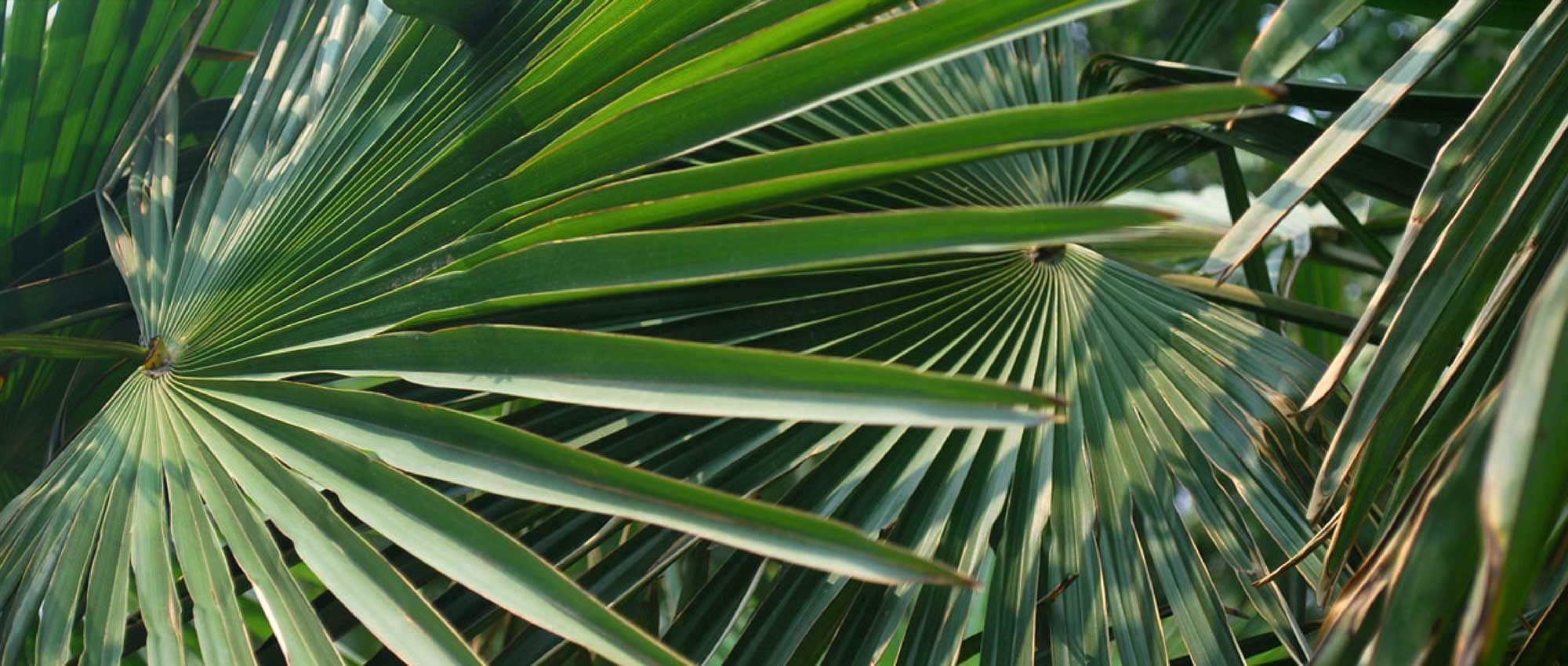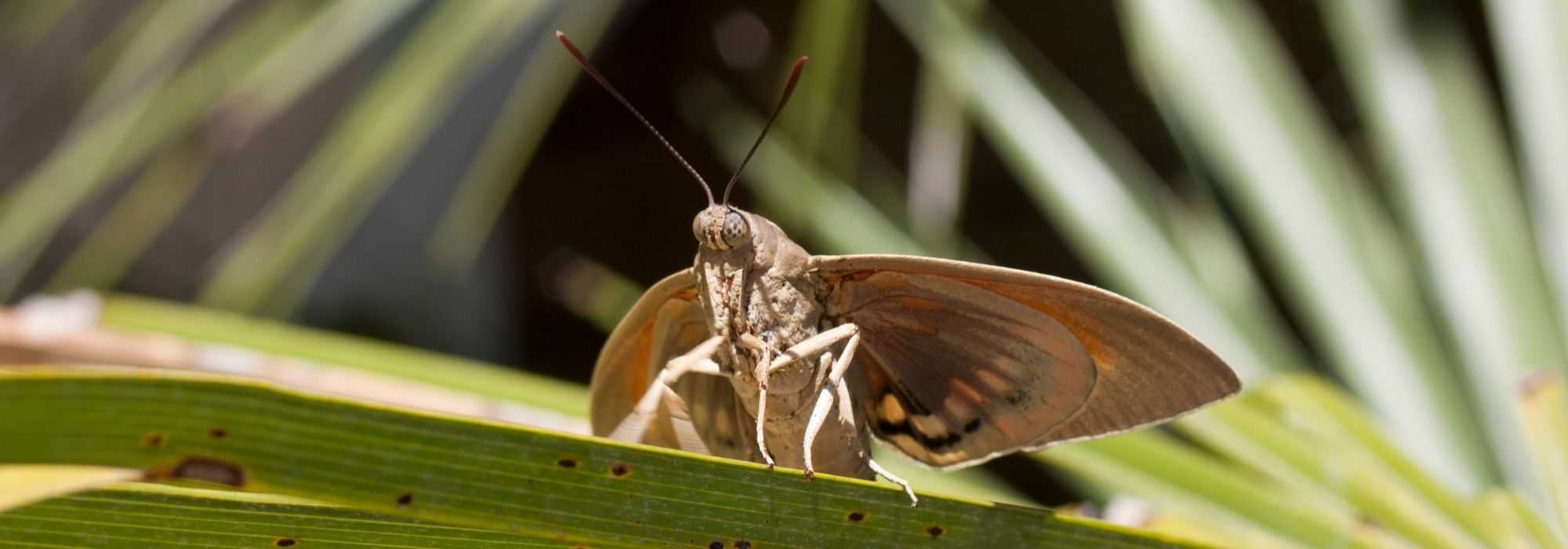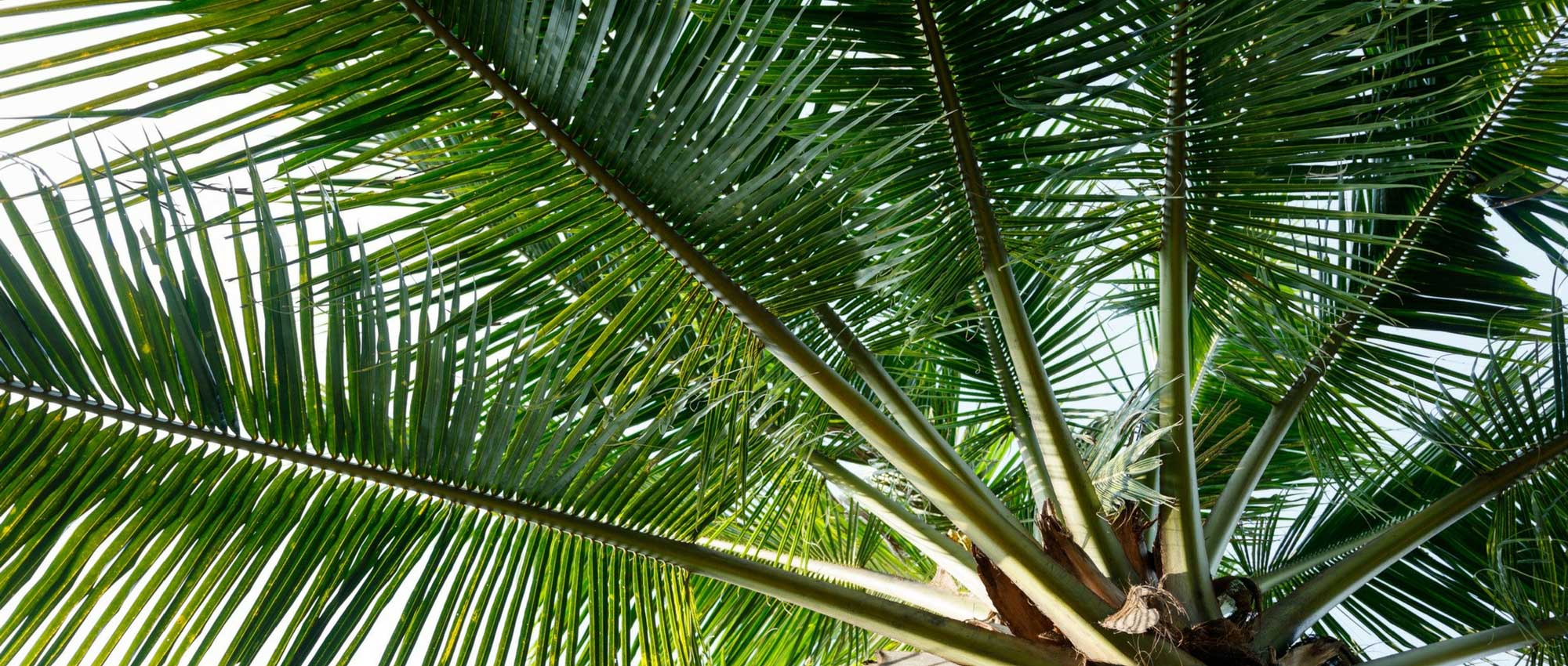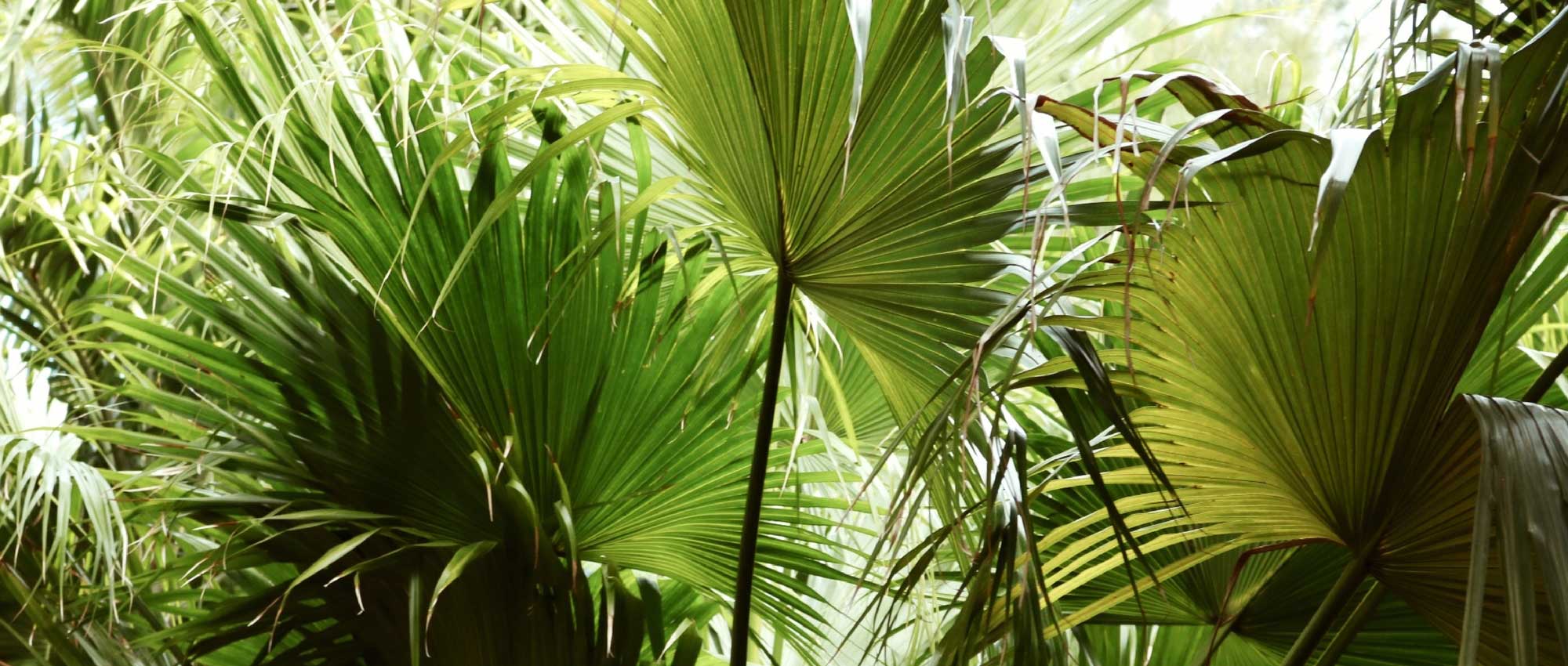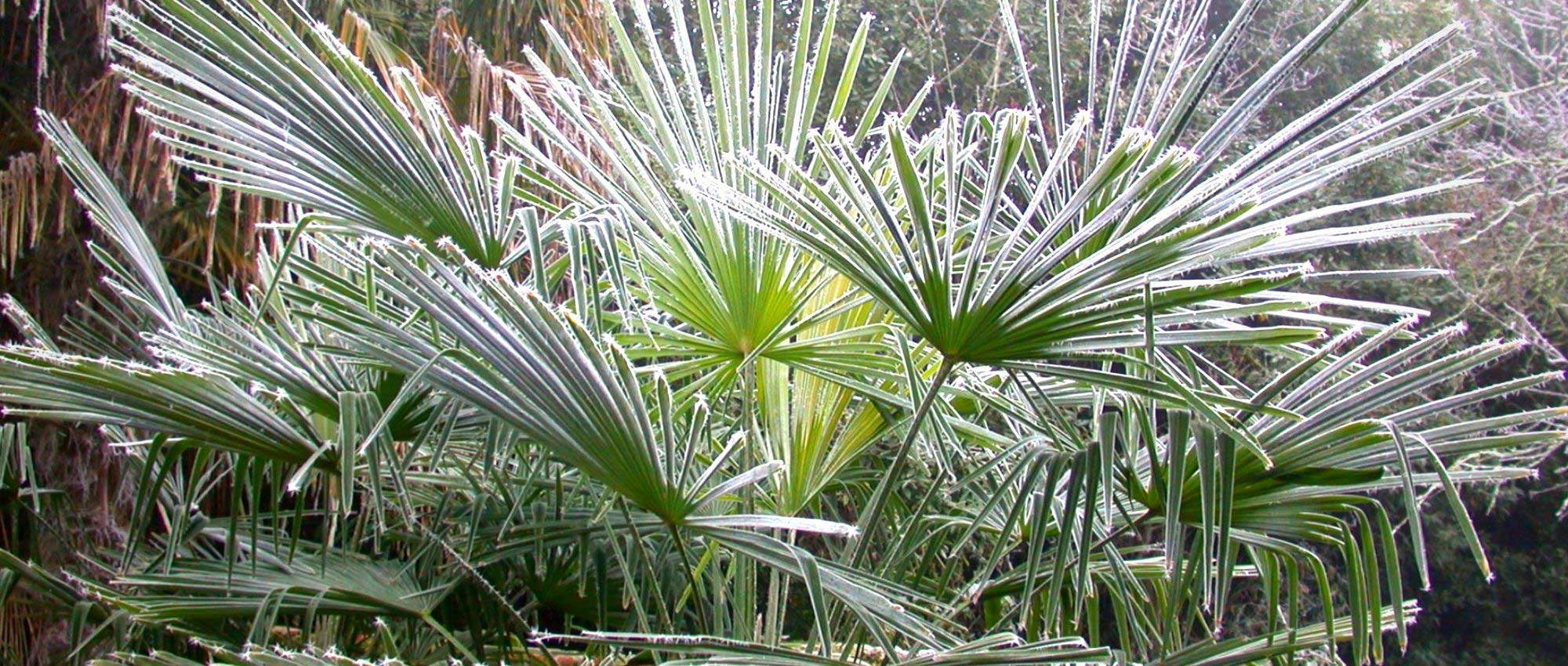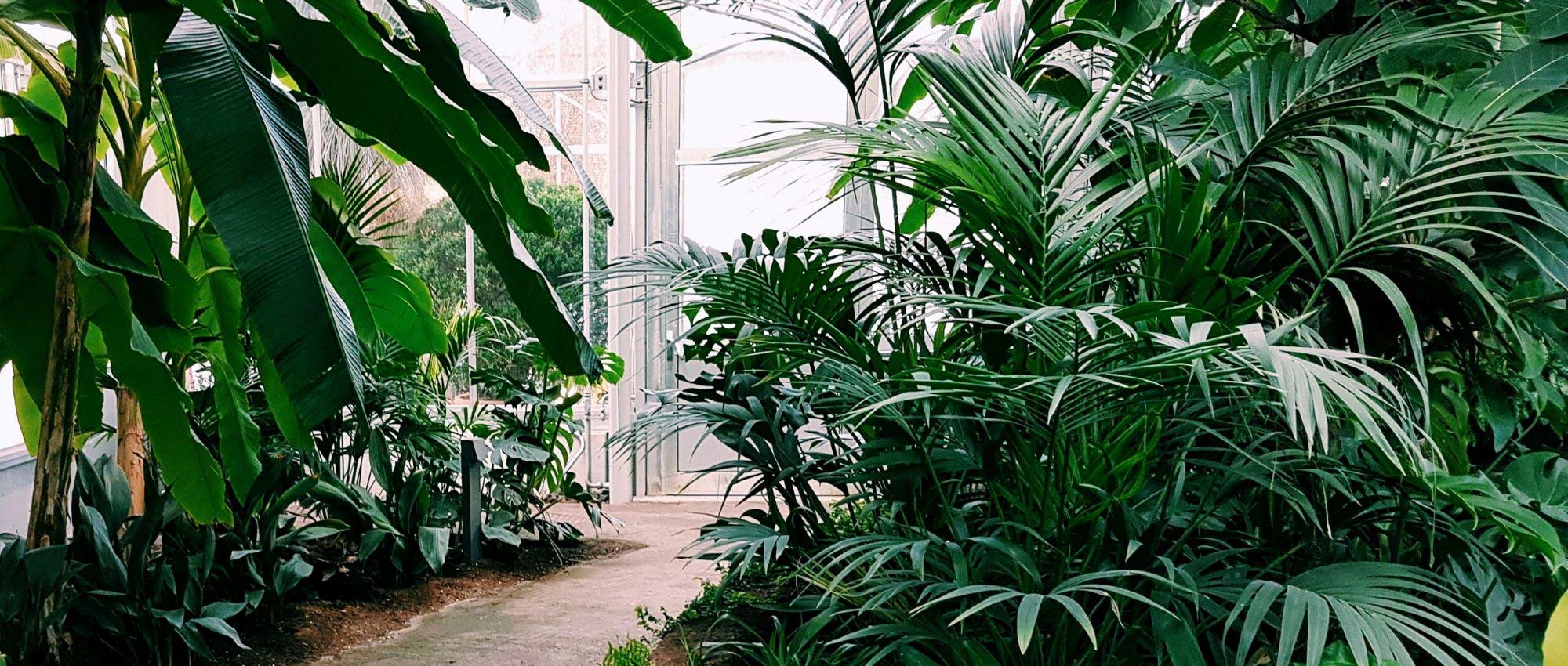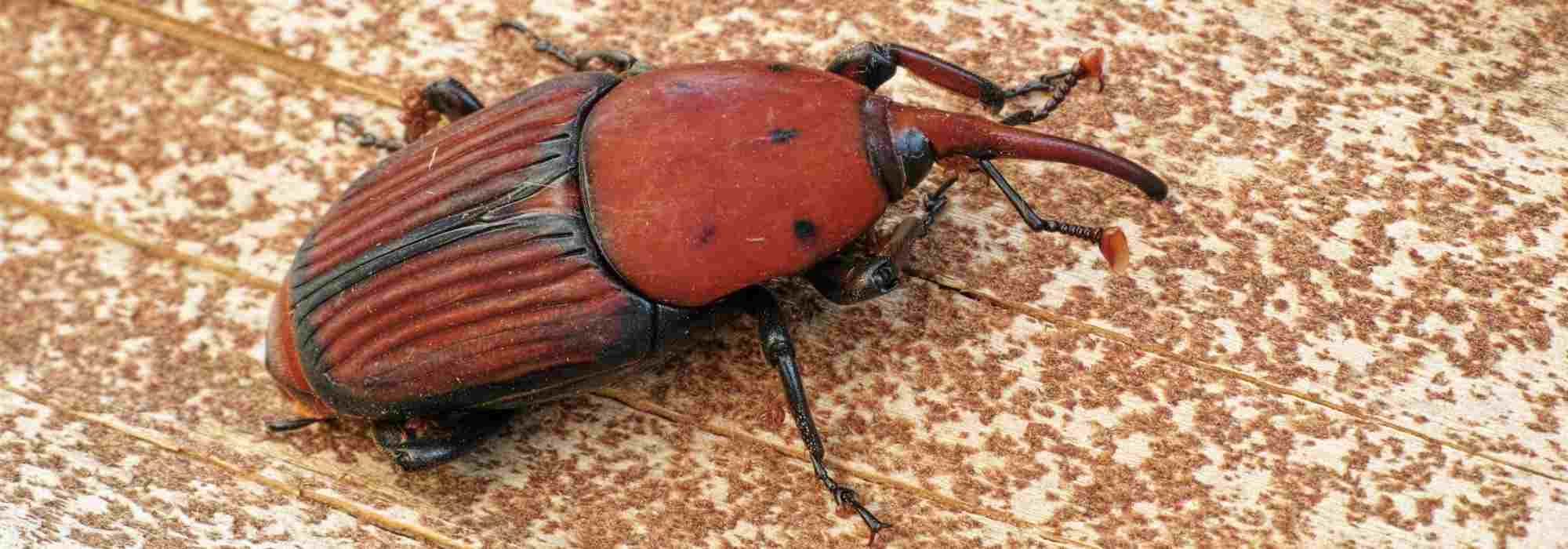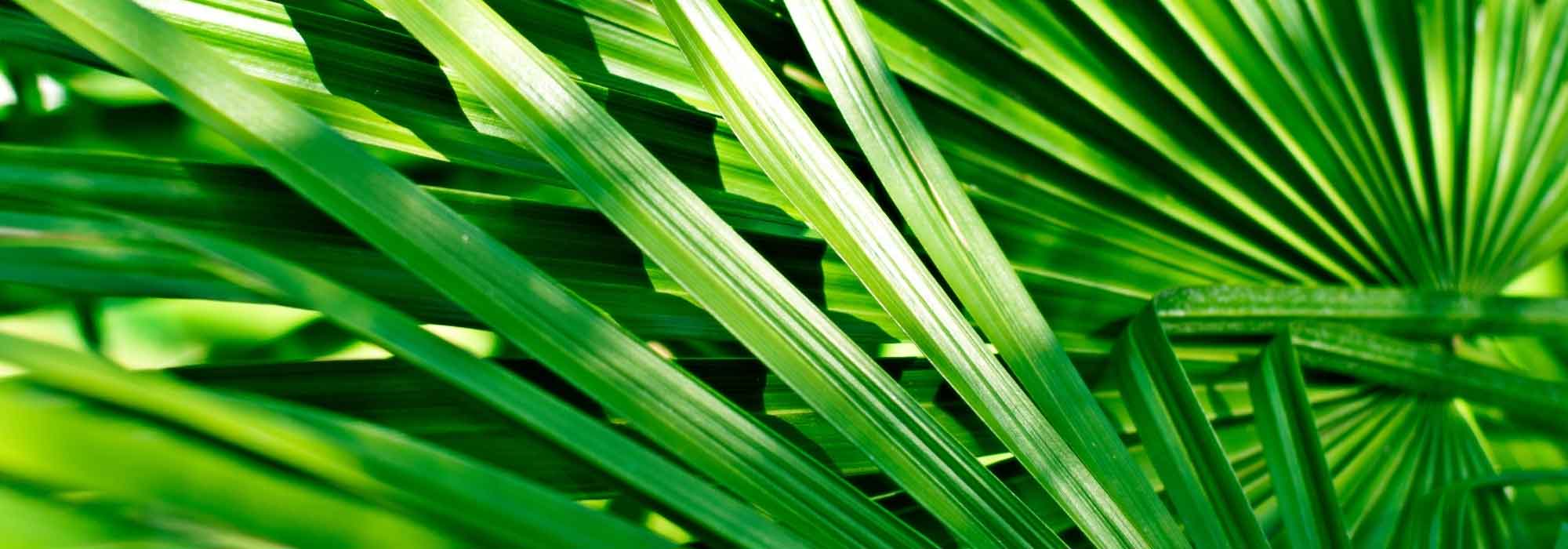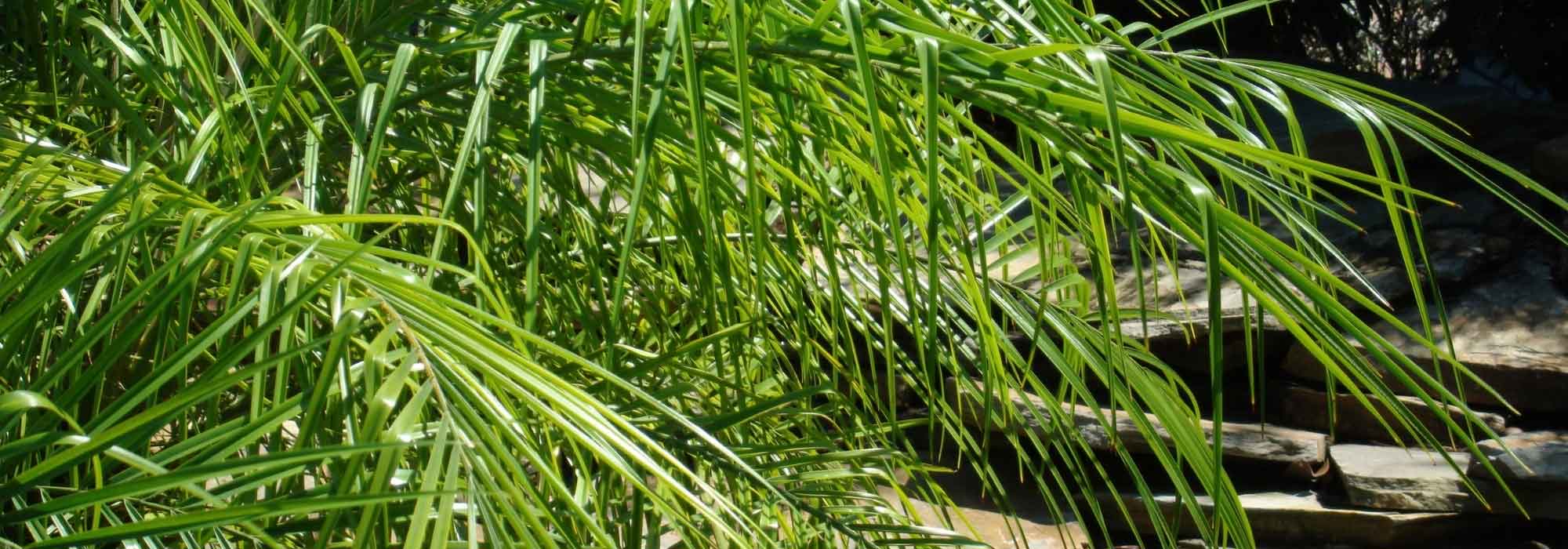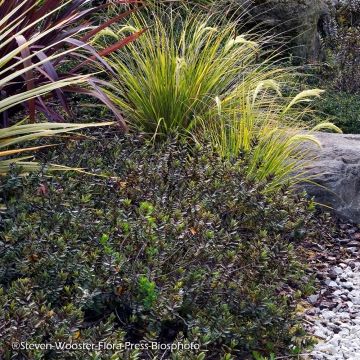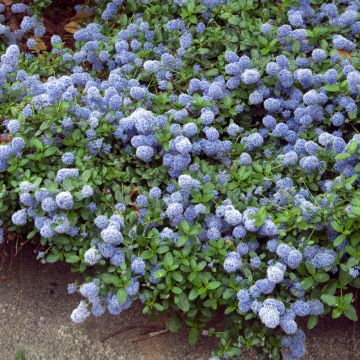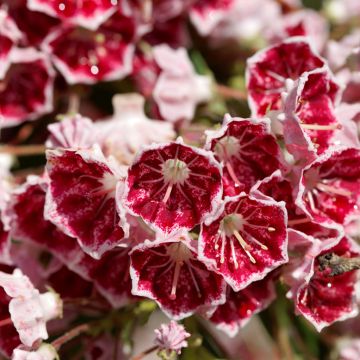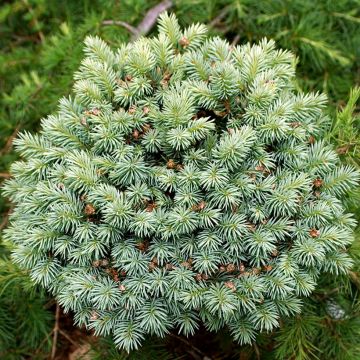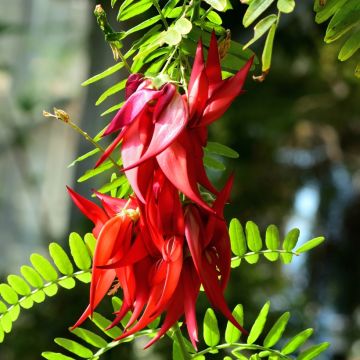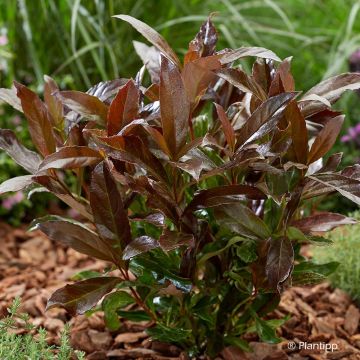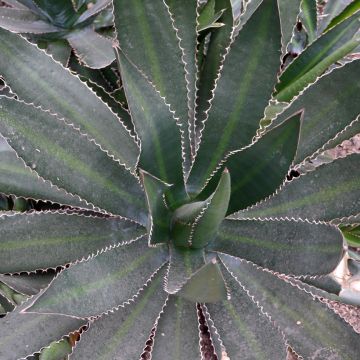

Butia capitata - Wine Palm
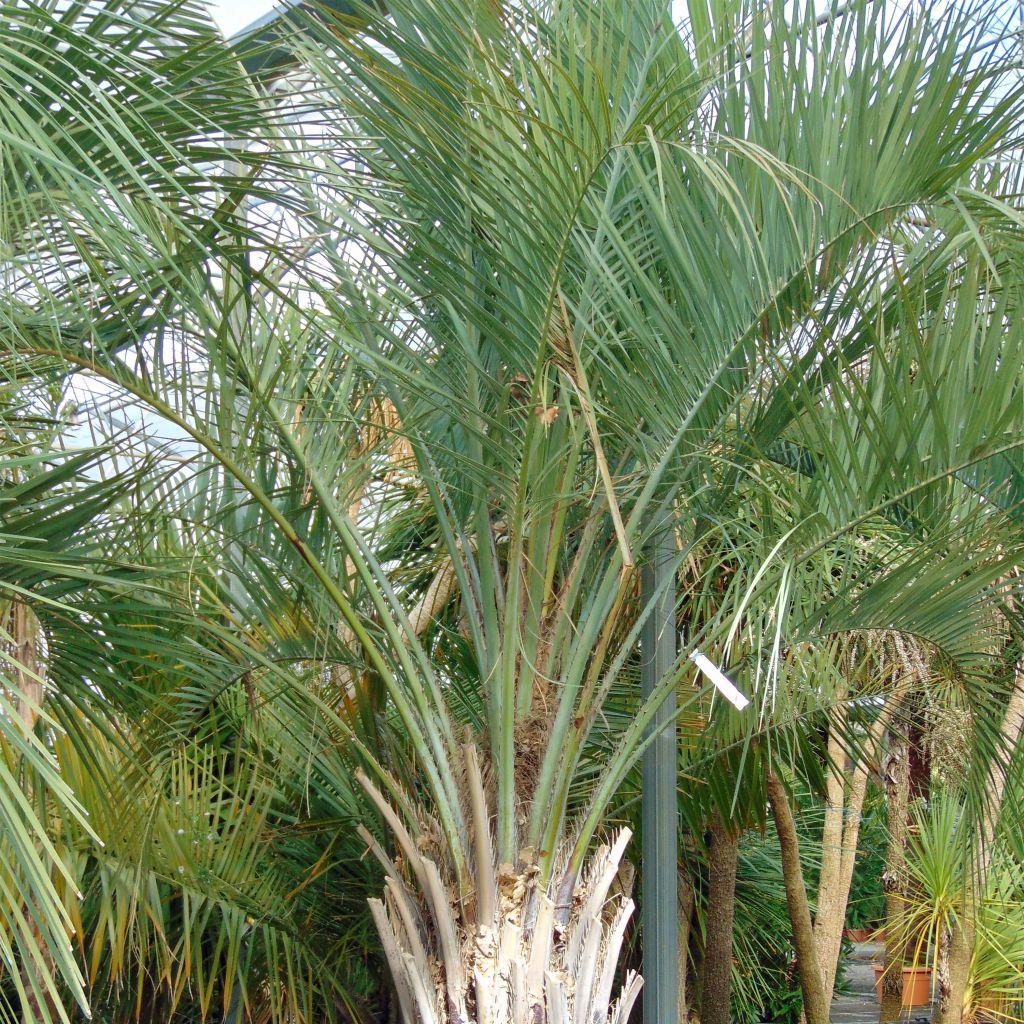

Butia capitata - Wine Palm


Butia capitata - Wine Palm
Butia capitata - Wine Palm
Butia capitata
Jelly Palm, Pindo Palm
Very beautiful palm tree but slow to shoot, alas!
André, 01/08/2021
Special offer!
Receive a €20 voucher for any order over €90 (excluding delivery costs, credit notes, and plastic-free options)!
1- Add your favorite plants to your cart.
2- Once you have reached €90, confirm your order (you can even choose the delivery date!).
3- As soon as your order is shipped, you will receive an email containing your voucher code, valid for 3 months (90 days).
Your voucher is unique and can only be used once, for any order with a minimum value of €20, excluding delivery costs.
Can be combined with other current offers, non-divisible and non-refundable.
Why not try an alternative variety in stock?
View all →This plant carries a 24 months recovery warranty
More information
We guarantee the quality of our plants for a full growing cycle, and will replace at our expense any plant that fails to recover under normal climatic and planting conditions.


Would this plant suit my garden?
Set up your Plantfit profile →
Description
Butia capitata (synonym odorata), also known as the Wine Palm, Apricot Palm, Lacquer Tree, or Vinegar Palm, is a medium-sized ornamental palm tree. It is not very demanding on soil type, and can be cultivated in open ground in all regions spared from severe frost. This species, similar to the postcard coconut tree, also develops long pinnate, gracefully arched leaves. Its beautiful grey-green to blue-green leaves, are often folded down to the ground, forming a beautiful rustling cascade in the wind around its massive trunk. Unlike its famous cousin, it can withstand short periods of frost down to -12° C (10.4° F), even when very young. In South America, it is cultivated for its delicious fruits, which are used to make the famous palm wine. They follow a spectacular flowering, in yellow, red, or violet tones, fragrant, on mature plants.
A shrubby plant of the Arecaceae family, highly appreciated as an ornamental and fruit-bearing plant, Butia capitata is, along with Jubaea chilensis, one of the only coconut trees resistant enough to cold for our gardens. It is native to Southern Brazil and Uruguay. It is found growing in low-altitude areas, sort of savannas in the central region of Brazil, on generally sandy and poor soil. A young specimen will develop quite slowly during the first five years, then the growth accelerates. The plant, described as unicaule, produces only one rough trunk called a stipe, stout in appearance, grey in colour, and not exceeding 5 m to 6 m (16.4 to 19.7 ft) in height but reaching 50 cm (19.7 in) in diameter at an advanced age. In subjects aged ten to twenty years and older, the bases of the petioles remain attached, forming a very particular pattern. The trunk carries a dense crown of leaves, 4 m to 5 m (13.1 ft to 16.4 ft) wide, composed of 20 to 35 pinnate leaves, measuring 2 m (6.6 ft) in length and strongly arched towards the ground. Their colour varies from grey-green to blue-green. Each leaf is carried by a light green petiole, 50 cm (19.7 in) to over 1 m (3.3 ft) long, armed with curved and filamentous spines, which should be handled with caution.
Flowering occurs in summer, on plants aged 10 to 15 years, every year. Butia capitata produces inflorescences measuring up to 1 m (3.3 ft), composed of male and female flowers. They are fragrant and grouped in threes on large clusters, with each female flower generally framed by 2 male flowers. Their colour varies from yellow to red, to purple-violet. After pollination, the female flowers transform into fleshy fruits, ovoid in shape, red-orange in colour, 3 cm (1.2 in) long and slightly pointed at the end. The pulp is fibrous but juicy, with a flavour somewhat similar to pineapple, plum, or mango. These fruits are quite rich in vitamin C and are used locally to make delicious jellies, palm wine, or to flavour punches. The ovoid or triangular seeds vary from 1.5 cm to 2.5 cm (0.6 in to 1 in) in length and from 1 cm to 1.4 cm (0.4 in to 0.6 in) in diameter. The fruit clusters can weigh more than 30 kilograms. Each fruit contains a very hard-shelled seed, a sort of tiny coconut, on which 3 characteristic pores of coconut fruits can be distinguished. The sprout emerges from one of these pores; it is even possible for 2 palms to emerge from the same seed.
This Apricot Palm, along with Trachycarpus fortunei and Jubaea chilensis, is one of the easiest to acclimatise in slightly cooler regions. In open ground, it can be placed in isolation in the company of banana trees or yuccas, in an exotic-inspired setting. But this drought-resistant species reveals its full potential in a Mediterranean-style garden, accompanied by Cycas or Duprez Cypress (Cupressus dupreziana), a true Saharan relic almost extinct in its native Tassili des Ajjers. It can be planted in groups of 3 specimens, surrounded by a carpet of thyme, a sowing of California Poppies, or a bed of Felicia. A contemporary garden could plant it above a tide of white pebbles.
Butia capitata - Wine Palm in pictures
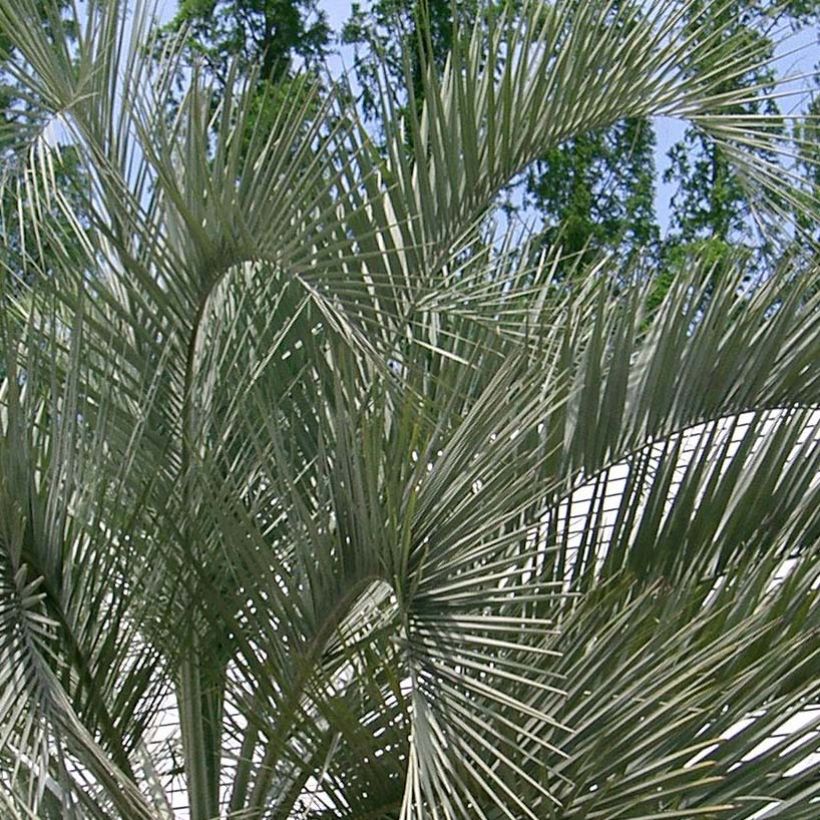

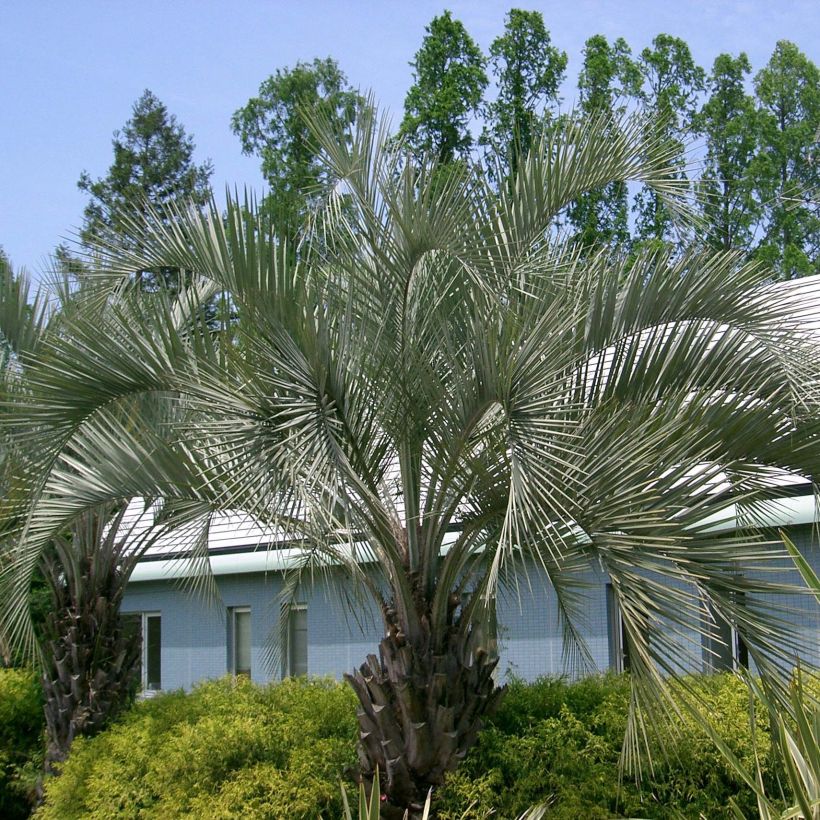

Plant habit
Flowering
Foliage
Botanical data
Butia
capitata
Arecaceae
Jelly Palm, Pindo Palm
South America
Other Palm trees A to Z
View all →Planting and care
Butia can be grown in a pot when it is young, while its growth is slow, but its quite significant growth means it can eventually be moved into open ground. This species requires a lot of sun and long, hot summers. Plant Butia capitata in light, well-drained soil that is dry in summer. It can even grow in poor, sandy and stony soil. It cannot tolerate an excess of limestone in the soil, and prefers soils with an acidic tendency. It will also appreciate a cooler, deeper and fertile soil, as long as the water does not stagnate in winter. Ideally, plant it in a mixture of coarse sand, gravel and garden soil, which will effectively drain winter moisture. Dig a deep hole because its roots penetrate deeply into the soil to withstand drought. Install it in a protected position from cold and dry winds. Protect young plants during the first 3 years and water them regularly in dry and hot weather. Protect the trunk with winter fleece, and even a thick mulch. Easy to grow, it requires little maintenance, except for pruning the leaves at the end of their life.
Propagate by sowing fresh seeds, which will germinate after 6 to 10 months.
These palms are susceptible to parasites such as the dreaded and widespread Paysandisia archon worm, a large moth that is prevalent in England. Specific treatments are now available as a preventive measure. It is also susceptible to the red palm weevil (Rhynchophorus ferrugineus). The symptoms are as follows: cut, dried, or yellowing fronds. These pests attack numerous palm species, with a fatal outcome: the leaves irreversibly and completely dry out as soon as the heart of the stem harbours larvae.
Planting period
Intended location
Care
Planting & care advice
-
, onOrder confirmed
Reply from on Promesse de fleurs
Similar products
Haven't found what you were looking for?
Hardiness is the lowest winter temperature a plant can endure without suffering serious damage or even dying. However, hardiness is affected by location (a sheltered area, such as a patio), protection (winter cover) and soil type (hardiness is improved by well-drained soil).

Photo Sharing Terms & Conditions
In order to encourage gardeners to interact and share their experiences, Promesse de fleurs offers various media enabling content to be uploaded onto its Site - in particular via the ‘Photo sharing’ module.
The User agrees to refrain from:
- Posting any content that is illegal, prejudicial, insulting, racist, inciteful to hatred, revisionist, contrary to public decency, that infringes on privacy or on the privacy rights of third parties, in particular the publicity rights of persons and goods, intellectual property rights, or the right to privacy.
- Submitting content on behalf of a third party;
- Impersonate the identity of a third party and/or publish any personal information about a third party;
In general, the User undertakes to refrain from any unethical behaviour.
All Content (in particular text, comments, files, images, photos, videos, creative works, etc.), which may be subject to property or intellectual property rights, image or other private rights, shall remain the property of the User, subject to the limited rights granted by the terms of the licence granted by Promesse de fleurs as stated below. Users are at liberty to publish or not to publish such Content on the Site, notably via the ‘Photo Sharing’ facility, and accept that this Content shall be made public and freely accessible, notably on the Internet.
Users further acknowledge, undertake to have ,and guarantee that they hold all necessary rights and permissions to publish such material on the Site, in particular with regard to the legislation in force pertaining to any privacy, property, intellectual property, image, or contractual rights, or rights of any other nature. By publishing such Content on the Site, Users acknowledge accepting full liability as publishers of the Content within the meaning of the law, and grant Promesse de fleurs, free of charge, an inclusive, worldwide licence for the said Content for the entire duration of its publication, including all reproduction, representation, up/downloading, displaying, performing, transmission, and storage rights.
Users also grant permission for their name to be linked to the Content and accept that this link may not always be made available.
By engaging in posting material, Users consent to their Content becoming automatically accessible on the Internet, in particular on other sites and/or blogs and/or web pages of the Promesse de fleurs site, including in particular social pages and the Promesse de fleurs catalogue.
Users may secure the removal of entrusted content free of charge by issuing a simple request via our contact form.
The flowering period indicated on our website applies to countries and regions located in USDA zone 8 (France, the United Kingdom, Ireland, the Netherlands, etc.)
It will vary according to where you live:
- In zones 9 to 10 (Italy, Spain, Greece, etc.), flowering will occur about 2 to 4 weeks earlier.
- In zones 6 to 7 (Germany, Poland, Slovenia, and lower mountainous regions), flowering will be delayed by 2 to 3 weeks.
- In zone 5 (Central Europe, Scandinavia), blooming will be delayed by 3 to 5 weeks.
In temperate climates, pruning of spring-flowering shrubs (forsythia, spireas, etc.) should be done just after flowering.
Pruning of summer-flowering shrubs (Indian Lilac, Perovskia, etc.) can be done in winter or spring.
In cold regions as well as with frost-sensitive plants, avoid pruning too early when severe frosts may still occur.
The planting period indicated on our website applies to countries and regions located in USDA zone 8 (France, United Kingdom, Ireland, Netherlands).
It will vary according to where you live:
- In Mediterranean zones (Marseille, Madrid, Milan, etc.), autumn and winter are the best planting periods.
- In continental zones (Strasbourg, Munich, Vienna, etc.), delay planting by 2 to 3 weeks in spring and bring it forward by 2 to 4 weeks in autumn.
- In mountainous regions (the Alps, Pyrenees, Carpathians, etc.), it is best to plant in late spring (May-June) or late summer (August-September).
The harvesting period indicated on our website applies to countries and regions in USDA zone 8 (France, England, Ireland, the Netherlands).
In colder areas (Scandinavia, Poland, Austria...) fruit and vegetable harvests are likely to be delayed by 3-4 weeks.
In warmer areas (Italy, Spain, Greece, etc.), harvesting will probably take place earlier, depending on weather conditions.
The sowing periods indicated on our website apply to countries and regions within USDA Zone 8 (France, UK, Ireland, Netherlands).
In colder areas (Scandinavia, Poland, Austria...), delay any outdoor sowing by 3-4 weeks, or sow under glass.
In warmer climes (Italy, Spain, Greece, etc.), bring outdoor sowing forward by a few weeks.































